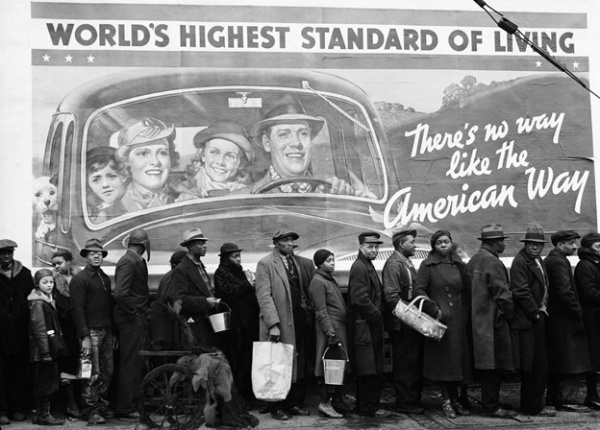Beware the fascist driverless car
Old problems have an annoying habits to return, wearing different hats.

Transport-based segregation
</em></u>
Yesterday Uneven Earth, whose slogan is “Where the ecological meets the political”, published a fascinating essay about “structural violence and the automobile - the intertwined legacy of fascism and the motorcar”.
The main theses of the articles, which I recommend reading in full, regardless of your own political opinions, are:
- [There is] “a long history of the automobile serving to protect spaces for whiteness”
- “The connection between automobiles, violence, and fascism begins in the 20th century”
- [in my own country, “Italy, the automobile itself became a symbol in the blending of the futurist and fascist movements in their shared rejection of history and chauvinistic desires for speed and social ‘purity’.”
- “The car was used as a social tool for white interests in the United States following the war, as the automobile commute enabled a new form of segregation in sprawling suburbs.”
- “The automobile, therefore, represents two inextricable forms of violence: the slow process of gutting the public city for racialized private wealth, and the acute violence of fascist car attacks”
- “the car is an embodiment of social atomization and private enclosure of individuals, families, and groups”
And these are the reasons why I am commenting that essay here
I do not want to discuss the main theme of that essay here. Truth be told, I need to read it again, just to be sure with which parts I agree, and with which I do not.
Here, I just want to share a couple of instinctive reactions from my first reading, to point out that, whatever you think of that article “as is”, it can, and really should, also help you think about something else, theoretically coming soon to a future near you.
The first thing that I noticed is the last point of the list above:
“the car is an embodiment of social atomization and private enclosure of individuals, families, and groups”
If this is what a car is, or was, then its place has been already taken, or will soon be taken, by smartphones filled with social “networking” apps. What are “filter bubbles”, closed Facebook groups, user blocking functions and the like, if not digital versions of “social atomization and private enclosure”?
The second thing I thought and, as obvious as it may be to some readers, the main point of this post, is this:
If traditional private cars have had those negative purpose and effects until now… nothing will change if we just switch to driverless, shared, smart cars".
A city where personal mobility only, or primarily happens by summoning altruistically shared/co-owned vehicles is a city that makes transport-based segregation much easier to achieve than in the past, and much less visible too. It is a city where the same tricks already widely used to not show the best job, insurance or housing offers to the “wrong” people can be extended to transportation. If people don’t ask the right questions from the beginning, that is.
Cities based on of self-driving, non-owned cars could be urban paradises. Seriously.
But whenever someone proposes them, don’t waste too much time looking into the technology. Check how the management software would be configured, instead. For details, see “The real risks of self-driving cars becoming SOMTs are..” paragraphs of this other post of mine.
Image source: copy, taken from the Uneven Earth essay, of a photograph by Margaret Bourke-White (see the “There’s no way like the American Way” section in the essay)
Who writes this, why, and how to help
I am Marco Fioretti, tech writer and aspiring polymath doing human-digital research and popularization.
I do it because YOUR civil rights and the quality of YOUR life depend every year more on how software is used AROUND you.
To this end, I have already shared more than a million words on this blog, without any paywall or user tracking, and am sharing the next million through a newsletter, also without any paywall.
The more direct support I get, the more I can continue to inform for free parents, teachers, decision makers, and everybody else who should know more stuff like this. You can support me with paid subscriptions to my newsletter, donations via PayPal (mfioretti@nexaima.net) or LiberaPay, or in any of the other ways listed here.THANKS for your support!